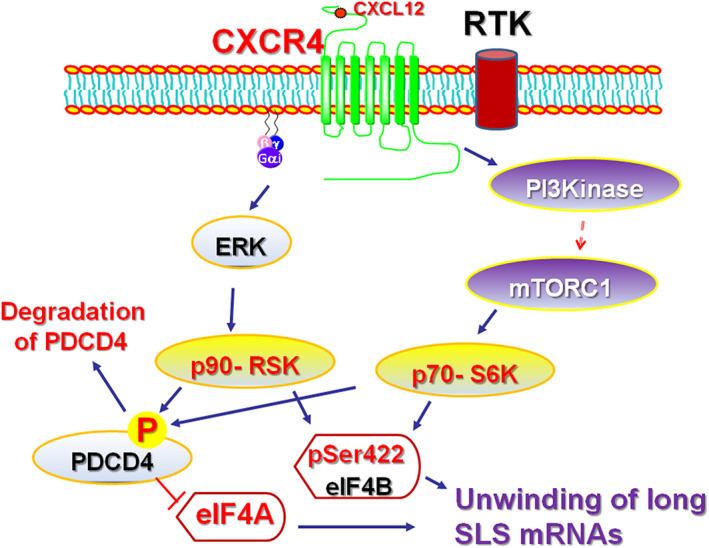FIGURE 2.

Signaling from G‐protein coupled receptors and receptor tyrosine kinases feed into activation of eIf4A1. The main signaling nodes, the phosphatidylinositol 3‐kinase (PI3K) and extracellular signal‐regulated (ERK) kinases, are activated by GPCRs, such as CXCR4, and receptor tyrosine kinases, such as epidermal growth factor receptor (EGFR) and human epidermal growth factor receptor 2 (HER2). PI3K and ERK subsequently activate ribosomal S6 kinases that phosphorylate the programmed cell death 4 (PDCD4) and mark it for degradation. This frees up the eIF4A1 to participate in the cap‐dependent protein translation. These pathways phosphorylate eIF4B, an ancillary protein that enhances the activity of eIF4A1, which speeds up the protein translation process
